

How to teach … habitats. Summer is here and Britain’s woodland, hedgerows, ponds and meadows are buzzing with wildlife.
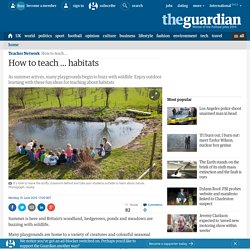
Many playgrounds are home to a variety of creatures and colourful seasonal blooms, and with the sun making an appearance, it’s the perfect time for packing up the exercise books, closing the classroom door and indulging in a bit of outdoor learning. This week the Guardian Teacher Network is giving you a reason to step out of the classroom with a selection of fun ideas and resources for learning and teaching about different natural habitats.
Primary students Capture imaginations by turning key stage 1 students into habitat hunters with the help of this lesson plan by the RSPCA. After discussing what the word habitat means, guide your class on a short walk around the school grounds, encouraging them to use all their senses as they look for places where animals might live. Another nice idea is to create a shoebox habitat using the following resources from wildlife charity ARKive. Amazon.co.uk Sign In. Identification guides and resources. The following resources will help you identify some of the common British plants and animals.
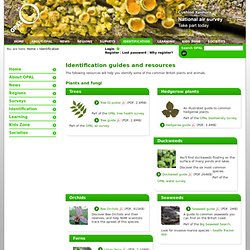
Plants and fungi Duckweeds. Purring monkey and vegetarian piranha among 400 new Amazon species. A 'purring' Caqueta titi monkey (Callicebus caquetensis). Photograph: Thomas Defler A purring monkey, a vegetarian piranha and a flame-patterned lizard are among more than 400 new species of animals and plants that have been discovered in the past four years in the Amazon rainforest, conservationists say. Discovered through hundreds of scientific expeditions between 2010 to 2013, the total of 441 new species – all new to science – includes 258 plants, 84 fish, 58 amphibians, 22 reptiles, 18 birds and one mammal. Cambridge University spin-out Epigenetix helps to unravel next chapter in gene story. Left to right: Christine Clark [Development Scientist] , Toby Ost [Research and Development] , Dr Tony Smith [Chief Technical Officer] , Dr Jason Mellad [Business Development] and Nathan Williams (Office Administrator) You might have thought that sequencing your genome, knowing the password to your unique DNA, would answer the big question, but, apparently, this is only half the story.
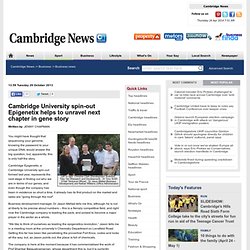
Cambridge Epigenetix, a Cambridge University spin-out formed last year, represents the next stage in finding out who we are in terms of our genes, and even though the company has been in existence so short a time, it already has its first product on the market and sales are “going through the roof”. The BSPP. Www.britmycolsoc.org.uk/education/public-outreach/ Association for the Study of Animal Behaviour (ASAB) Web. Agility- The teaching toolkit. Cell Organelles - Mrs. E's Biology Site. How do the smaller parts of a cell come together to create a functioning cell?
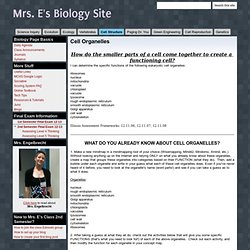
I can determine the specific functions of the following eukaryotic cell organelles: ribosomes nucleus mitochondria vacuole chloroplast lysosome rough endoplasmic reticulum smooth endoplasmic reticulum Golgi apparatus. Gender and Genetics. Genetic Components of Sex and Gender Humans are born with 46 chromosomes in 23 pairs.
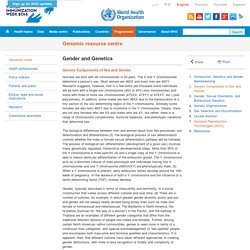
The X and Y chromosomes determine a person’s sex. Most women are 46XX and most men are 46XY. Research suggests, however, that in a few births per thousand some individuals will be born with a single sex chromosome (45X or 45Y) (sex monosomies) and some with three or more sex chromosomes (47XXX, 47XYY or 47XXY, etc.) (sex polysomies). The biological differences between men and women result from two processes: sex determination and differentiation.(3) The biological process of sex determination controls whether the male or female sexual differentiation pathway will be followed.
A-level Biology/Cells. Cell Organelles[edit] Organelles are parts of cells.
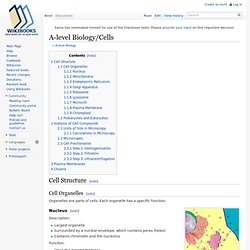
Each organelle has a specific function. 1. Nuclear membrane 2. Nuclear pore 3. Nucleus[edit] Description: A-level Biology Factsheet. Education. Physiological Society Understanding Life. Following the huge success of our competition - The Science of Sport: How to Win Gold - last year, we are pleased to launch another school research competition again in 2013: The Science of Life: How your body works.
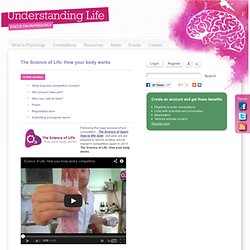
Let's Dissect. UK Biology Competitions. Beyond the Gardens - The Plant Family Tree. The ugly animals are coming! Science Matters: Classification. This one falls into the category of "I wish I thought of that" - such a clever way to help your students remember the kingdoms.
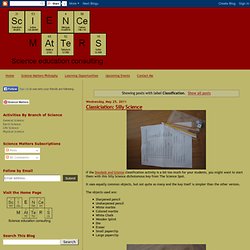
I can't really do the article justice, so you'll probably best be served to read it yourself, but I'll try to sum up: Students trace their left on hand on their paper. If you have a green thumb, you're good with PLANTS When you hold up your index finger while at a sporting event, you're saying ""We're number one". Practical work for learning. Learning Zone, Education Resources. We have developed a range of educational resources for secondary students on the topic of sugar production and processing.

The Beet to Bowl resources include PowerPoint presentations, worksheets, interactive whiteboard activities, scientific experiments and supporting teacher notes. The Beet to Bowl education resources have been developed to focus on four key areas: growing sugar beet, inside a sugar factory, the chemical reactions involved in the production and processing of sugar, and the uses of sugar. TeacherTube - Teach the World. Department of Physiology, Development and Neuroscience. Physiology Friday 2013. Following the success of our inaugural Physiology Friday in 2012, we are pleased to announce that Physiology Friday 2013 is on Friday 18 October.
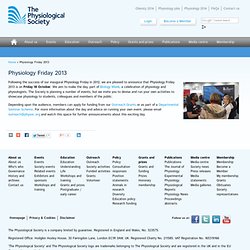
We aim to make the day, part of Biology Week, a celebration of physiology and physiologists. The Society is planning a number of events, but we invite you to devise and run your own activities to showcase physiology to students, colleagues and members of the public. Depending upon the audience, members can apply for funding from our Outreach Grants or as part of a Departmental Seminar Scheme. For more information about the day and advice on running your own event, please email outreach@physoc.org and watch this space for further announcements about this exciting day. For Teachers - Genome Generation. Edexcel GCSE Biology How Science Works Data, evidence, theories and explanations The interpretation of data, using creative thought, to provide evidence for testing ideas and developing theories. There are some questions that science cannot currently answer and some that science cannot address.
Practical and enquiry skills Collecting data from primary or secondary sources, including theuse of ICT sources and tools. Communication skills. For Teachers - Genome Generation. Faculty of Medical and Veterinary Sciences. In addition to numerous lecture theatres, teaching laboratories and seminar rooms, our students are supported throughout their study by general and course-specific facilities dedicated to teaching purposes, outlined below. Several of these key teaching facilities form part of our nationally-recognised Applied and Integrated Medical Sciences Centre of Excellence in Teaching and Learning (AIMS CETL), and we also make extensive use of innovative e-learning tools. Our students also access further resources to enable independent study. These include: Medical Library Veterinary Sciences Library Arts and Social Sciences Library (IT facilities and study areas available to students) Computer Centre ‘Blackboard’, an online service used extensively throughout the faculty that provides easy access to teaching and learning materials via computer or mobile device.
Bozeman Biology Videos. Tree of Life lesson plans and worksheets. The Big Bang. The Big Bang Fair provides a wealth of interactive stand activities and live theatre shows which aim to highlight the exciting future that a background in science, technology, engineering and mathematics can provide for young people. The National STEM Centre has developed packages of resources to support teachers in building students' understanding of The Big Bang Fair themes before the event, and consolidate their learning afterwards. These resource lists contain selected resources from the eLibrary and across the web, which link closely to the activities that students will experience in each of the themes. The lists support your planning for the event and enriching the experience for your students. Happy Earth Day! The Google homepage wishes me Happy Earth Day today but I would like to wish everyone Happy Earth-like-planet Kepler-186f Day!
Society for General Microbiology.